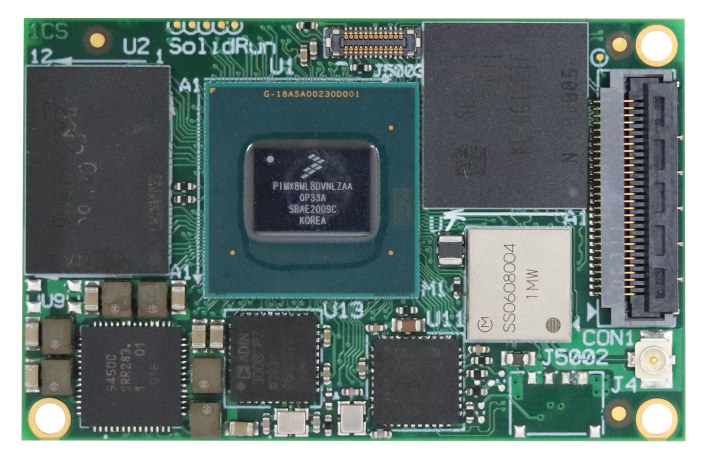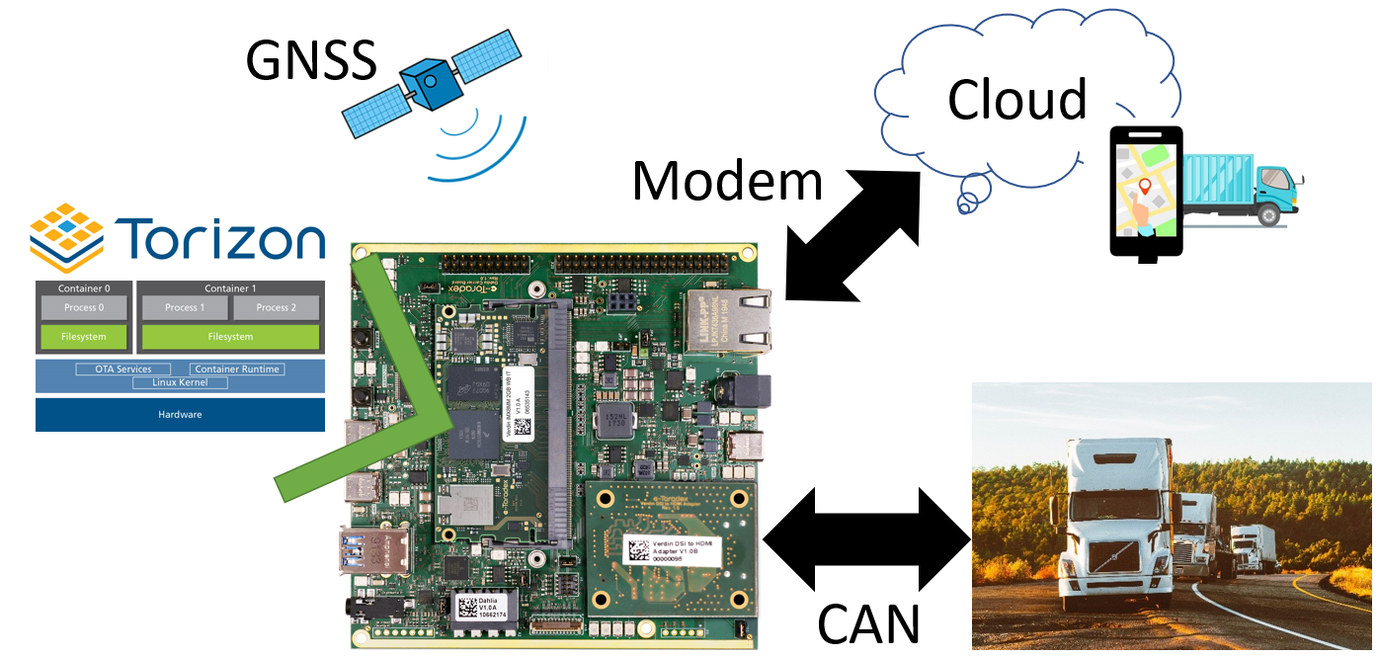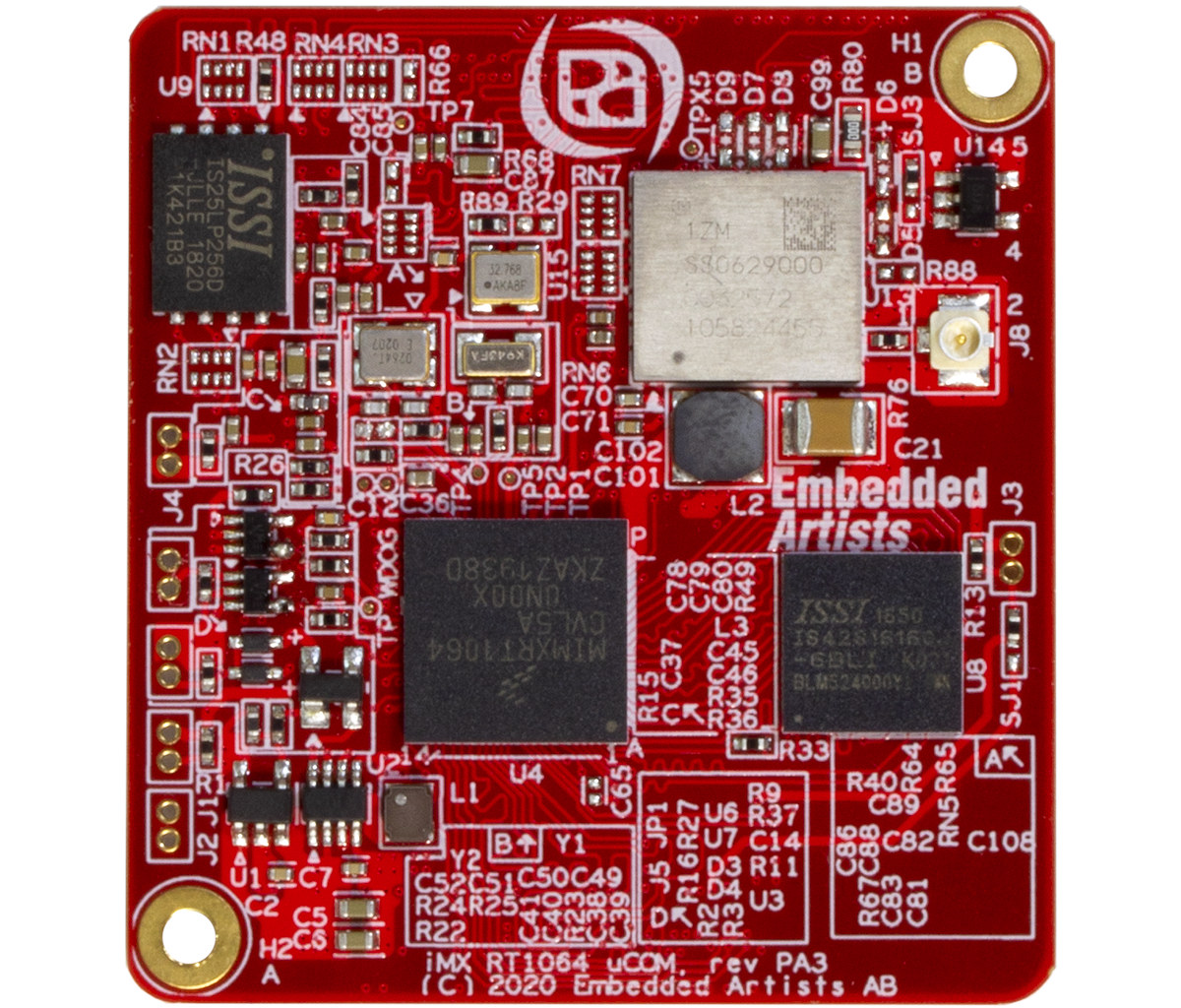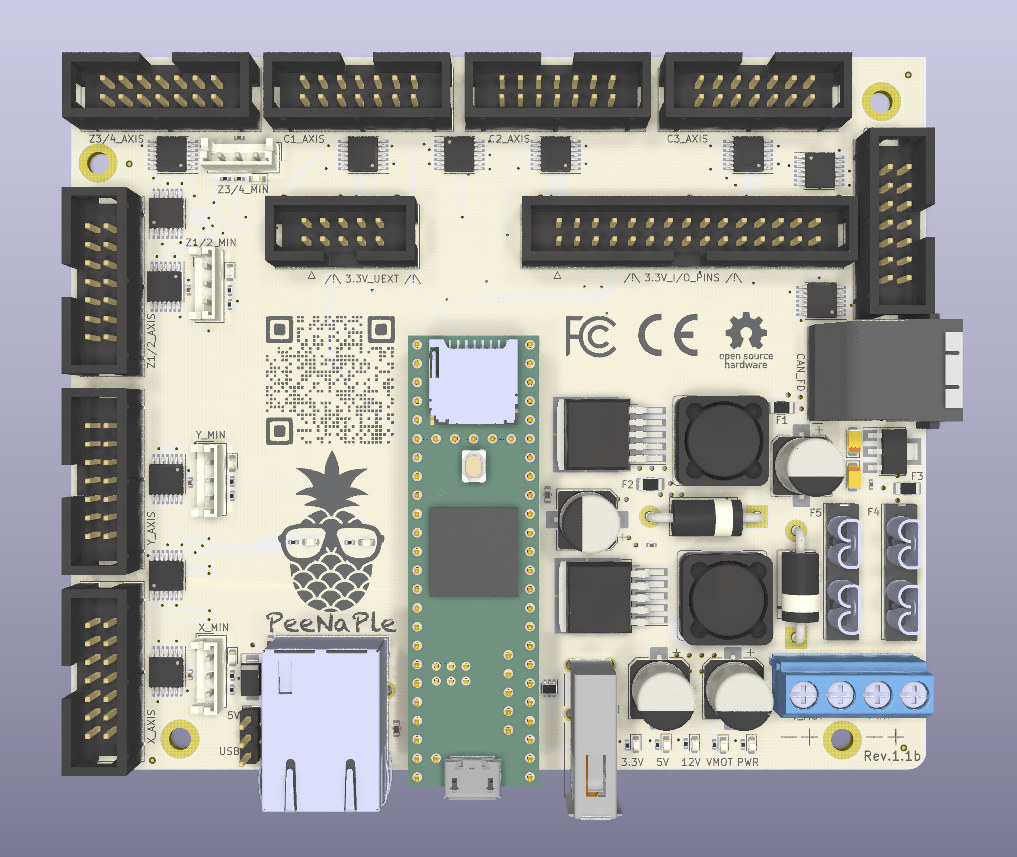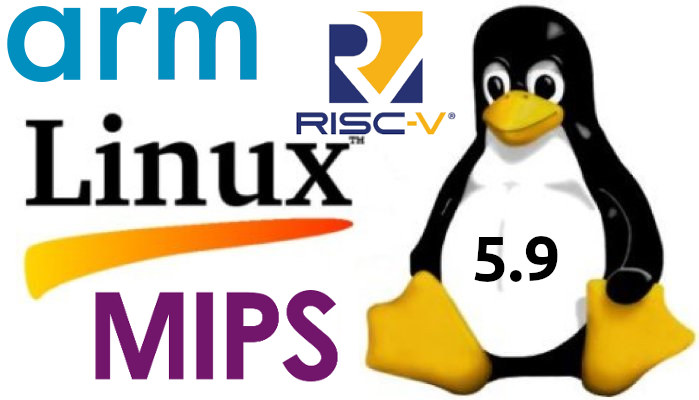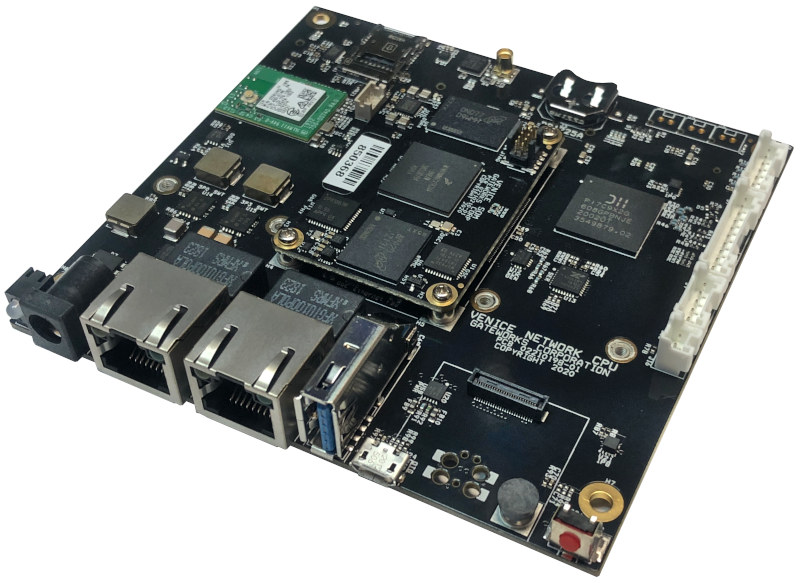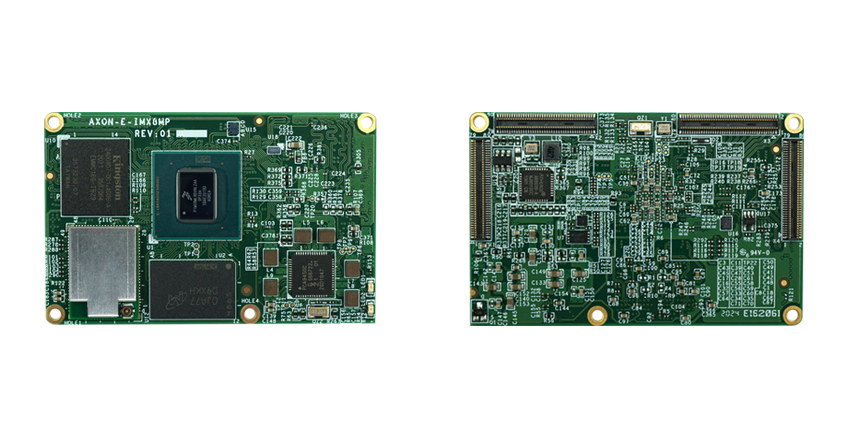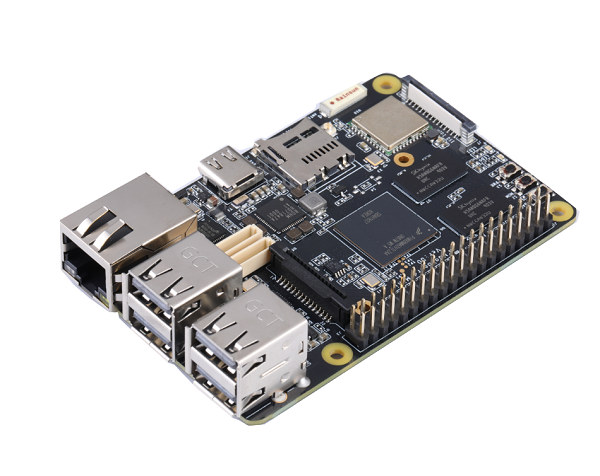SolidRun already offers NXP based solutions with AI accelerators through products such as SolidRun i.MX 8M Mini SoM with Gyrfalcon Lightspeeur 2803S AI accelerator, or Janux GS31 Edge AI server with NXP LX2160A networking SoC, various i.MX 8M SoCs and up to 128 Gyrfalcon accelerators. All those solutions are based on one or more external Gyrfalcon AI chips, but earlier this year, NXP introduced i.MX 8M Plus SoC with a built-in 2.3 TOPS neural processing unit (NPU), and now SolidRun has just unveiled the SolidRun i.MX 8M Plus SoM with the processor together with development kits based on HummingBoard carrier boards. Specifications: SoC – NXP i.MX 8M Plus Dual or Quad with dual or quad-core Arm Cortex-A53 processor @1.6 GHz (industrial) / 1.8 GHz (commercial), with Arm Cortex-M7 up to 800MHz, Vivante GC7000UL 3G GPU (Vulkan, OpenGL ES 3.1, OpenCL 1.2), 2.3 TOPS NPU, 1080p60 H.264/H.265 video encoder, 1080p60 video […]
Reading Vehicle OBD-II data through CAN within a containerized application in Embedded Linux
CNXSoft: This is a guest about OBD-II and CAN support in embedded Linux by Andre Márcio de Lima Curvello, Sr. FAE and Technical Evangelist, Toradex A connected world makes it possible to track your online orders being shipped to your home through your smartphone in real-time, and getting information about your vehicle such as tire pressure, outside temperature, and even details like if a lamp is broken – has begun to be possible via smartphones in modern vehicle models. But behind the magic of knowing where the truck carrying your package is at all times and other details of the vehicle, there is a very complex world made of embedded devices ‘talking’ to each other so the information makes its way from the device to you. In this article, you will learn how to create an application to communicate with a vehicle through CAN via the OBD-II standard. We use […]
Embedded Artists Unveils iMX RT1064 uCOM with WiFi 5 & Bluetooth 5.1 Module
Embedded Artists have recently introduced iMX RT1064 uCOM system-on-module powered by NXP i.MX RT1064 Cortex-M7 crossover MCU clocked at 600 MHz with 1MB SRAM and 4GB flash on-chip, as well as 32MB SDRAM, and equipped with an optional WiFI 5 and Bluetooth 5.1 module from Murata. iMX RT1064 uCOM technical specifications: SoC – NXP i.MX RT1064 Arm Cortex-M7 @ up to 600 MHz with 1MB SRAM, 4MB on-chip QSPI flash, 2D graphics acceleration engine System Memory – 32 MB SDRAM Storage – Optional additional 4GB to 32GB eMMC flash and/or SQPI flash Wireless – Optional Murata Type 1ZM dual-band 802.11b/g/n/ac WiFi 5 and Bluetooth 5.1 module based on NXP 88W8987 2x DF40C-100 board-to-board connectors: Storage – 2x USDHC Display I/F – 24-bit parallel RGB up to 1366 x 768 pixels Camera – Parallel CSI Audio – 3x SAI, SPDIF Connectivity – 10/100M Ethernet (requires PHY on carrier board) USB – […]
Teensy 4.1 Cortex-M7 Board Gets Marlin Firmware and OpenPnP Breakout Board
Teensy 4.0 and Teensy 4.1 are some of the most powerful microcontroller-class boards you’ll find on the market thanks to NXP i.MX RT1062 Arm Cortex-M7 crossover processor clocked at up to 600 MHz, and there won’t break the bank are PJRC sells those for $20 and up on their own store or Amazon. If you’re into 3D printers, CNC, or pick-and-place machines, you’ll be glad to learn Teensy 4.1 board is the first Arm Cortex-M7 board to support Marlin 2.0 firmware, and a person nicknamed CrazzyFrenchDud is developing PeeNaPle breakout board for Teensy 4.1 to work with OpenPnP open-source software. The initial commit to Marlin firmware was made on September 10 for both Teensy 4.0 and 4.1 boards, but the title was changed to Teensy 4.1 only since Teensy 4.0 is not supported at this time, and may not be suitable for many 3D printers due to a lack of […]
Linux 5.9 Release – Main Changes, Arm, MIPS & RISC-V Architectures
Linus Torvalds has just announced the release of Linux 5.9 on lkml: Ok, so I’ll be honest – I had hoped for quite a bit fewer changes this last week, but at the same time there doesn’t really seem to be anything particularly scary in here. It’s just more commits and more lines changed than I would have wished for. The bulk of this is the networking fixes that I already mentioned as being pending in the rc8 release notes last weekend. In fact, about half the patch (and probably more of the number of commits) is from the networking stuff (both drivers and elsewhere). Outside of that, the most visible thing is a reinstatement of the fbdev amba-clcd driver – that’s a noticeable patch, but it’s basically just mainly a revert. The rest is really really tiny (mostly some other minor driver updates, but some filesystem and architecture fixes […]
Gateworks Venice Industrial IoT SBC Family Features Dual Ethernet and mPCIe Sockets
US-based Gateworks is known for its Ventana and Newport embedded networking single board computers, and the company has now introduced a third family with Venice SBC family based on NXP i.MX 8M Mini SoC with support for multimedia capabilities through MIPI-DSI, MIPI-CSI and I2S Audio headers, and targetting industrial IoT with dual Ethernet, and mini PCIe expansion sockets that can be used for 802.11ax/ac/b/g/n WiFi, 5G/4G/3G/CATM1 cellular modems, and more. The company plans to introduce four different models with GW7100, GW7200, GW7300, and GW7400 with an increase in size and feature set for each model, and mechanically compatible with previous Gateworks families. But at launch, only GW7300 SBC is available so we’ll focus our reporting on this particular model. Gateworks GW7300 specifications: SoC – NXP i.MX 8M Mini single, dual or quad-core Arm Cortex-A53 processor @ up to 1.6GHz, with Arm Cortex-M4 at 400+MHz, 3D GPU (OpenGL ES 2.0), 2D […]
TechNexion Unveils EDM and AXON SoM’s Powered by NXP i.MX8M Plus SoC
A few days ago we wrote about Variscite’s NXP i.MX 8M Plus-powered AI systems-on-modules and devkits, and now it’s TechNexion’s turn to introduce its own SoM’s for artificial intelligence applications. Just like variscite, the company has two variants with EDM-G-IMX8M-PLUS following the EDM standard with a 260-pin edge connector, and AXON-E-IMX8M-PLUS part of the AXON family with board-to-board connectors better suited to vibration-prone applications. Besides the form factor and different default storage capacities, both SoM’s share the same specifications: SoC – NXP i.MX8M Plus quad-core Cortex-A53 processor @ up to 1.8 GHz with Cortex-M7 real-time core @ 400 MHz, Vivante GC520L 2D GPU, Vivante GC7000UL 3D GPU, 1080p60 hardware decoder (HEVC, H.264, VP9, and VP8) and encode (H.265/H.264), and 2.3 TOPS NPU System Memory – Up to 8 GB LPDDR4 Storage AXON-E-IMX8M-PLUS – 32 GB eMMC flash by default EDM-G-IMX8M-PLUS – 16 GB eMMC flash by default Networking Chips Qualcomm […]
Raspberry Pi inspired MaaxBoard Mini SBC features NXP i.MX 8M Mini SoC
Last year, Embest – an Avnet company – introduced MaaXBoard NXP i.MX 8M SBC mostly compatible with Raspberry Pi form factor and running Android 9.0 or Yocto Linux. The company has now launched MaaXBoard Mini with a 14nm NXP i.MX 8M Mini quad-core processor. In some ways, the new board follows more closely Raspberry Pi 3 Model B form factor with four USB 2.0 ports, instead of the two USB 3.0 ports found in the first version of the board, but it does so without HDMI output, leaving MIPI DSI as the only option for display output. MaaxBoard Mini (AES-MC-SBC-IMX8MINI-G) specifications: SoC – NXP i.MX 8M Mini Quad with 4x Arm Cortex-A53 cores @ up to 1.8GHz, Cortex-M4F real-time core @ 400MHz, Vivante GCNanoUltra 3D GPU and GC320 2D graphics, 1080p H.264/H.265 VPU; System Memory – 2GB DDR4 Storage – eMMC socket for up to 64GB flash, MicroSD slot Display […]


